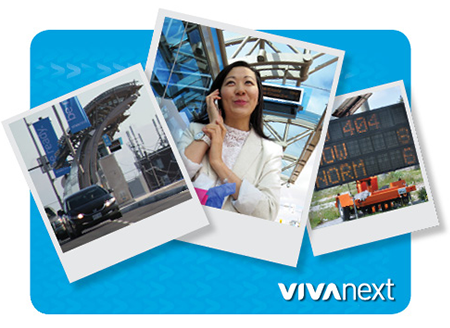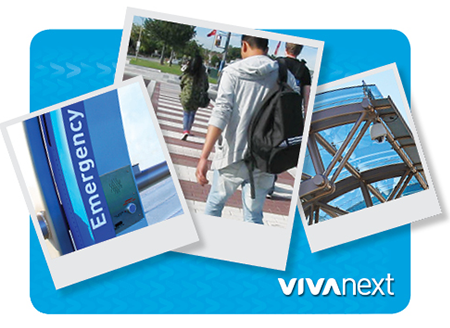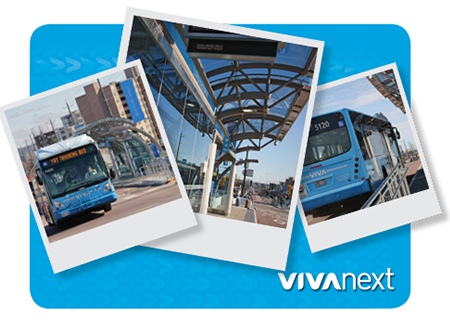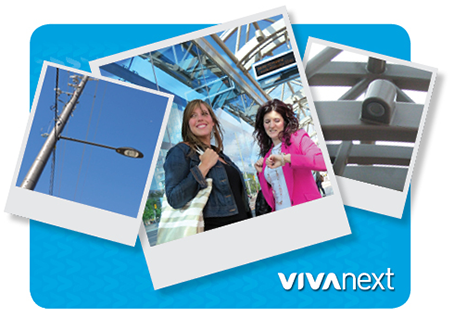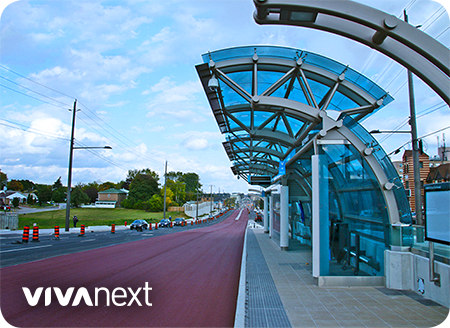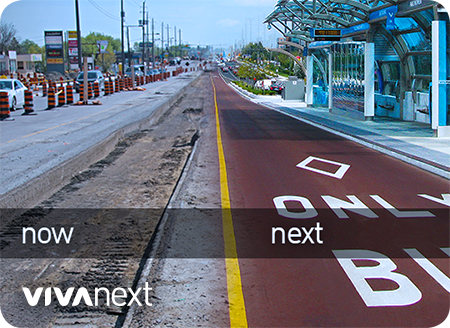Taking advantage of every sunny day in Newmarket to advance the work on the Davis Drive rapidway, our teams are working hard to finish all sorts of little details. With much of the construction complete, we’re now focused on testing and adding final touches, to get ready for Viva service, which we call “handover”.
Handover means just what it says – it’s the moment in time when the transit system is handed over to its owner for care and custody, which of course is YRT/Viva. Before handover, the system is the responsibility of the Contractor/Design Builder. Once handover takes place, legal ownership and responsibility is transferred to the owner, and the system becomes the owner’s private property. At this time, the Contractor/Design Builder’s warranty period begins, just the way it happens when a homebuyer takes possession of a new house.
In the case of vivaNext, some elements of the Davis Drive project, like the rapidway, vivastations, sidewalks and planters, will be transferred to the Region. Others, like the sidewalks and streetlights will be transferred to the Town of Newmarket to maintain.
Because the formal handover is such a significant development, especially on a major infrastructure project like the vivaNext rapidway, it’s important to ensure that everything is in perfect working order. The various steps involved in opening for service vary. Here are some examples:
- Fare equipment is tested to ensure the ticket vending machine [TVM] prints properly.
- Traffic signals are programmed and permanent signals are turned on. Each phase is then tested individually, and all the push buttons are tested to make sure they work.
- Streetlights are inspected to ensure all the wiring is according to the drawings, the bases are level and the power connections are all correct. The teams go out at night and actually turn on the lights to ensure that all the lamps come on and nothing is flickering. Lighting is an important safety feature for both pedestrians and vehicles.
During testing every single detail of the rapidway is inspected through a visual walk-down. Then a list of the things that still need to be finished or perfected is created with items graded from most serious to least serious. These items will be fixed either prior to the system opening or post opening under the warranty.
Although we are officially handing over the Davis Drive rapidway to York Region, YRT, and the Town of Newmarket, in many ways we are handing it over to you – at the end of the day, the ultimate owners of the rapidways are the public of York Region. VivaNext wants to provide a reliable, efficient rapid transit system and beautiful streetscape for our valuable transit customers. With every new piece of rapidway delivered, we are building a better system that we can all be proud of.

